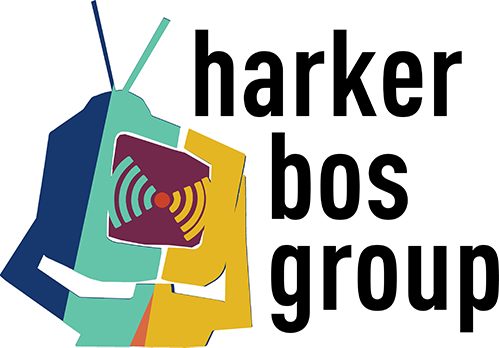Weekly Roundup – Week of July 29th, 2024
Sports Media & Sports Betting News
WNBA Secures Big Media Rights Increase With Disney, NBCU, Amazon
"Like their counterparts in the NBA, the WNBA has signed a long-term media rights deal with Disney, NBCUniversal and Amazon — with a big increase in the value of the contract.
The 11-year deal, which will begin with the WNBA’s 2026 season, will consolidate the bulk of the league’s rights with those three companies, down from five (Disney, Amazon, CBS, Scripps’ Ion network and NBA TV) in the current deal. The agreement is reportedly worth about $200 million per season, or $2.2 billion for the full term — more than three times the current, $60 million per season deal that ends in 2025. (Additional partners may come on board before the new deal kicks in, the WNBA says.)"
Paris Offers the Biggest Betting Opportunity in Olympic History
"About 164 million adults, or two-thirds of the U.S. population, live in states where they can legally bet on Team USA (and plenty of other countries) at the Paris Olympics. That’s up from 97 million, or 40% of the population, from the pandemic-delayed 2021 Tokyo Olympics.
The 2024 Games, which officially opened yesterday, will be the most heavily bet on Olympics since the Professional and Amateur Sports Protection Act (PASPA) was overturned by the Supreme Court in 2018, a decision that allowed all states to offer Nevada-type sports wagering. Plus, says American Gaming Association spokesperson Joe Maloney, the environment is all around better.
Longtime SuperBook at Westgate VP Jay Kornegay says he expects up to 80% of the Olympics handle to come from 5-on-5 basketball. Men’s 5-on-5 is already the most-heavily bet sport leading into the Olympics, with women’s 5-on-5 at No. 2, according to multiple major sportsbooks. That’s a product of both familiarity of the sport and its stars."
Amazon is building a sports media empire. What's next?
A deal came together soon after the call, culminating in an announcement Wednesday that will have Amazon pay nearly $20 billion over 11 years for NBA and WNBA games, including six NBA conference finals, the annual playoff play-in tournament and three WNBA Finals.
Suddenly, Amazon, already home to the NFL’s “Thursday Night Football,” is a major broadcaster of the two most popular North American leagues — with rights to playoff games in each.
Amazon slowly built its sports portfolio, adding the NFL (including a game on Black Friday), NASCAR and the WNBA Finals, as well as Champions League soccer and Grand Slam tennis events in Europe. It owns a piece of the YES Network, which broadcasts New York Yankees games, and recently proposed an investment in some regional cable sports networks. With the long-anticipated NBA deal announced if not quite official, one question hanging over the sports industry is how much more Amazon wants. Marine isn’t exactly sure."
News & Political Media News
Podcasting getting tougher as big names get most of the cash and audience
"Podcasting is getting tougher for those who don’t already have a significant following, says a new report, as a few big names take most of the cash and get most of the audience.
Recent data shows that the top 25 podcasts reach almost half of regular US listeners, and the top 100 shows reach more than 60% of the total podcast audience. But it also shows that high-profile deals don’t always work out.
...
But not all of those deals worked out, with the biggest flop being the Archetypes show with Prince Harry and Meghan Markle. That cost Spotify $20M, and only one show ever aired.
The tech industry is being more cautious now, with contracts tying payouts to hitting audience targets, says the report."
Radio station advertising revenues in the United States from 2006 to 2024, by type
"The source forecast that, in 2024, radio station advertising revenues in the United States will amount to approximately 13.76 billion U.S. dollars, of which 2.98 billion (or almost 22 percent) will come from online radio. The total figure is over four percent higher than the 2023 estimated 13.2-billion-dollar revenues.
U.S. top radio advertiser sectors
According to other sources, retail was the leading radio advertiser industry in the U.S., having invested nearly 394 million dollars in the medium in 2022. For comparison, the government, politics, and organizations segment ranked third that year with about 339 million dollars. Since the early 2010s, digital's share in the U.S. radio ad expenditure has grown consistently, experiencing a sharper increase after the pandemic. In 2019, it stood at 10 percent; in 2022, it reached 19 percent.
Radio consumption in the U.S.
The medium enjoys an almost ubiquitous reach across the country. As of mid-2023, over 80 percent of U.S. adults listened to radio weekly. Music continued to attract most of the listeners."
IAB: Ad Buyers Boost Digital Video Spending But Complain About Inadequate Measurement
"A new report from IAB highlights many of the major trends transforming the ad business, including data suggesting that 89% of ad buyers are embracing alternative measurement currencies, as well as some of the ongoing problems facing the digital advertising business.
The newly released second half of its “2024 IAB Digital Video Ad Spend & Strategy Report,” revealed that the three major digital video channels will see increased spend in 2024 and that buyers are investing across all video content types, from short-form to long-form to creator and immersive. Short-form (69%) and vertical-format (68%) account for the largest share of buyers.
The report also highlighted, however, ongoing problems with measurement. Two in three buyers cite measurement issues with small advertisers aiming for niche audiences rather than broad reach are significantly more likely to report issues."
Iowa Kids May Soon See Cigarette-Style Warnings On Social Media Sites
"The U.S. surgeon general is urging Congress to pass legislation requiring warning labels on social media, an idea that’s gaining traction among some mental health professionals in Iowa who treat teenagers.
Jeff Reiland, a child and family therapist with Gundersen Health System, says a host of studies confirm that too much social media can poison a child’s wellbeing.
“The problem has been getting worse,” Rieland says, “and there’s a growing body of knowledge that really helps confirm more and more our concerns that when kids are exposed to too much social media, they experience symptoms of depression and anxiety.”
“Teenagers average about five hours of social media time every day, and we know it is a big part or a contributing factor to problems kids are having with anxiety and depression,” Rieland says. “When kids have more than three hours of social media time, they are twice as likely to experience depression.”
Putting a warning label on social media won’t magically fix the problem, Rieland says, but it may be a good first step."


